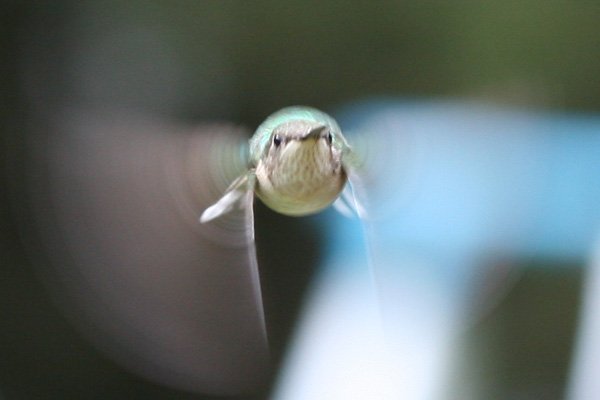
It’s coming right for us! Ruby-throated Hummingbird photographed by Corey
If you’ve ever watched hummingbirds zip through a garden or tropical forest, you know what tiny miracles they are. So lightweight you could mail a few of them with just one postage stamp, so crazy-metabolic they have to eat their own body weight every day, so seemingly fancy free. (Well, at least the males, which behind their resplendent gorgets have a wham-bam-thank-you-ma’am approach to raising the next generation.)
But did you ever wonder how they fly so rapidly without bumping into anything, executing maneuvers that Maverick could only dream of? Now scientists have a better understanding of the secrets of hummingbird flight, as detailed in a paper in the Proceedings of the National Academy of Sciences.
In a nutshell, a flying hummingbird appears to determine how close or far away something is not by gauging how quickly other objects whizz by it. Instead, it concentrates on the target’s expansion rate—how quickly or slowly the target seems to swell or shrink in the field of vision. To calculate altitude, though, hummers did seem to take movement into account.
So the next time you see a hummingbird’s amazing aerial display, take a moment to consider that behind the beauty lies a fierce, lightning-fast expertise in physics.












Leave a Comment